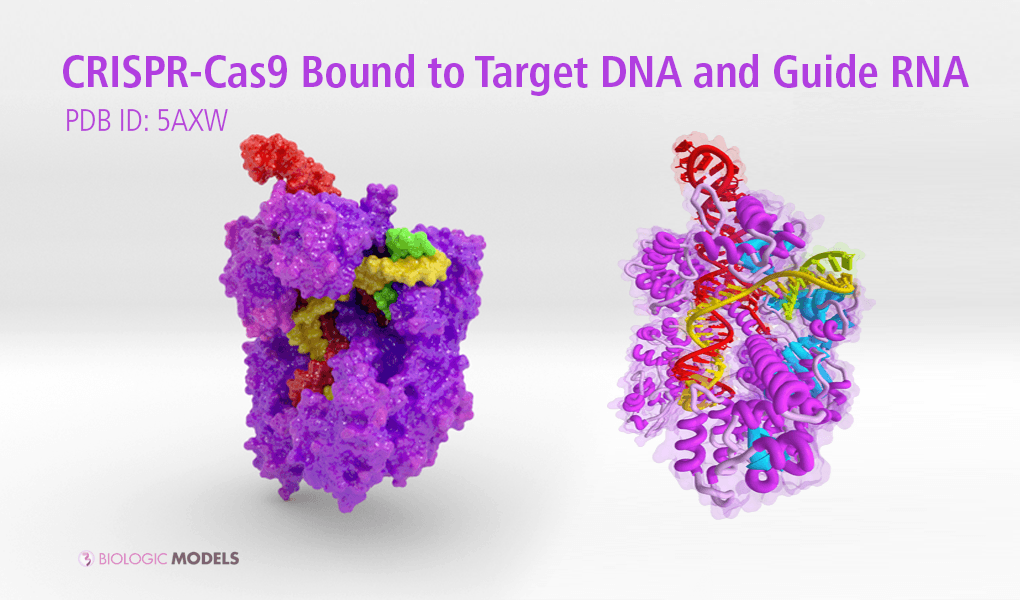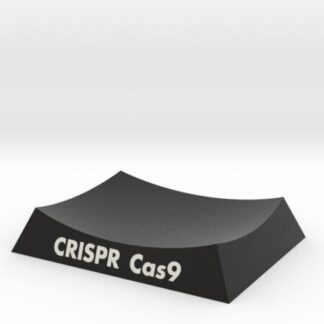
CRISPR-Cas9
Use this 3D printed protein model of CRISPR-Cas9 to explain how bacteria evolved to use viral RNA to guide molecular machinery to combat the invasion of viruses by cutting out viral DNA.
Protein Description 5AXW
“The RNA-guided DNA endonuclease Cas9 cleaves double-stranded DNA targets with a protospacer adjacent motif (PAM) and complementarity to the guide RNA. Recently, we harnessed Staphylococcus aureus Cas9 (SaCas9), which is significantly smaller than Streptococcus pyogenes Cas9 (SpCas9), to facilitate efficient in vivo genome editing. Here, we report the crystal structures of SaCas9 in complex with a single guide RNA (sgRNA) and its double-stranded DNA targets, containing the 5′-TTGAAT-3′ PAM and the 5′-TTGGGT-3′ PAM, at 2.6 and 2.7 Å resolutions, respectively. The structures revealed the mechanism of the relaxed recognition of the 5′-NNGRRT-3′ PAM by SaCas9. A structural comparison of SaCas9 with SpCas9 highlighted both structural conservation and divergence, explaining their distinct PAM specificities and orthologous sgRNA recognition. Finally, we applied the structural information about this minimal Cas9 to rationally design compact transcriptional activators and inducible nucleases, to further expand the CRISPR-Cas9 genome editing toolbox.”
Biologic Explorer: 5AXW
DNA Edited in Space by CRISPR-Cas9
For the first time, DNA has been edited with CRISPR-Cas9 in Space. The experiment was designed to understand the effects of radiation on DNA. To simulate this damage, yeast DNA was Cas9 experiment successfully conducted to examine the effects of radiation on DNA. Comparing the molecular structure of the yeast’s DNA before and after CRISPR-Cas9 editing would allow scientists to observe if there were any changes in the molecular structure, indicating whether the DNA repair in space introduced any genetic errors.
Model Description
The model depicts CRISPR (purple) bound to its guide RNA (red) while editing its Target DNA (yellow and green). The subtle color variations in the CRISPR are associated with its atomic temperature. The darker the color, the less the protein moves with a cooler atomic temperature. 3D printed in full-color sandstone.
3D Print CRISPR-Cas9




